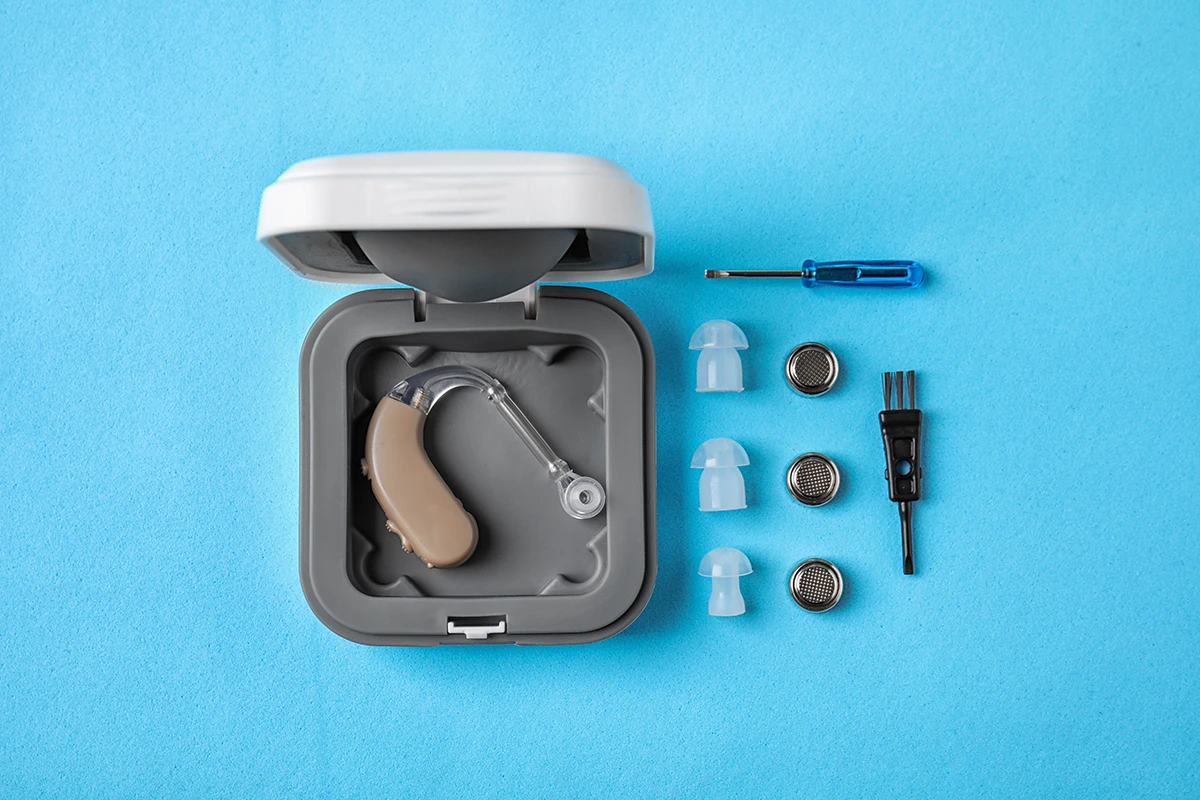
To ensure optimal performance and longevity of your devices, it’s important to clean your hearing aids every day. Daily cleaning helps prevent a buildup of earwax, moisture, and debris, which can affect the comfort and functionality of your devices. Read on to learn all the ins and outs of how to clean your hearing aids properly and get other care tips to prevent damage, maximize performance, and extend the lifespan of your devices.
Recommended Hearing Aid Cleaning Tools
As with any electronic device, your hearing aids require regular cleaning and routine care to function properly. Using the right tools during your daily hearing aid cleaning routine is essential and ensures optimal performance.
With these hearing aid cleaning supplies, you can easily care for your devices at home:
- Hearing Aid Brush: A soft-bristled brush specifically designed to gently remove earwax, debris, and dirt from the exterior surfaces of your hearing aid, including the battery compartment, microphone openings, and receiver/speaker.
- Microfiber cloth: Microfiber is a soft material that you can use to wipe the surface of your hearing aid after every use. This helps remove dust, oils, sweat, and other moisture without scratching the delicate components of your devices.
- Wax removal tools: The best way to remove earwax buildup from the nooks and crannies of your hearing aids without damaging them is with a wax pick, wax loop, or other specialized tool.
- Tubing wire cleaner: The cleaning tool often comes with your hearing aid. It will have a thin wire or threader on one end and a brush on the other end, allowing you to gently remove earwax and debris.
- Drying kit or dehumidifier: Moisture is a common issue that can compromise the functionality and performance of hearing aids. A drying kit or dehumidifier removes moisture to prevent damage.
By incorporating these hearing aid cleaning tools into your cleansing routine, you can ensure your hearing aids remain hygienic, comfortable, and working properly for years to come.
A Guide to Daily Hearing Aids Cleaning and Care
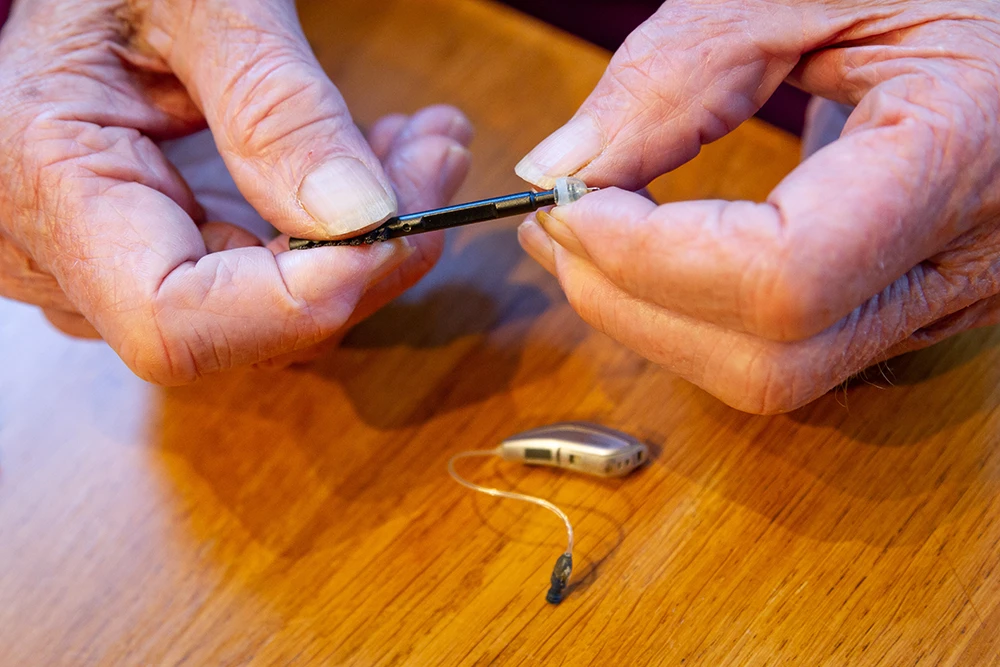
Keeping your hearing aids clean and dry is essential for optimal performance and longevity. This easy-to-follow daily cleaning routine works for most hearing aid styles, offering a solid foundation for optimal care:
- Wash your hands: Before handling your hearing aids, wash your hands with soap and water and dry them thoroughly.
- Brush: Gently brush the entire exterior surface of the device to remove earwax or debris from the microphone and receiver openings, battery compartment, and tubing (if applicable).
- Surface cleaning: Carefully wipe down the body of your hearing aid using a microfiber cloth.
- Dry overnight: Using a dehumidifier overnight is essential to removing moisture buildup that can accumulate during the day. If your device uses batteries, take them out and leave the compartment open while the hearing aid dries.
Hearing aids come in many shapes and sizes. Different styles of hearing aids require specific cleaning techniques to ensure optimal performance and longevity. Below are some special considerations and cleaning tips for various hearing aid styles.
How to Clean Behind-the-Ear (BTE) Hearing Aids
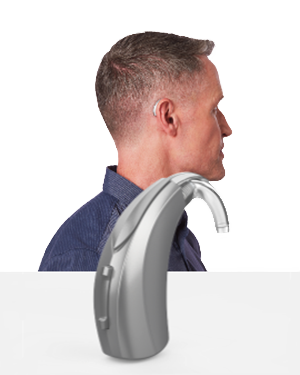
Behind-the-ear (BTE) hearing aids rest comfortably behind the ear and have a thin tube with a soft tip, or a custom-made ear mold that fits inside the ear. To ensure your BTE hearing aids remain clean and working properly, you will also need to clean the dome or earmold every day:
- Remove the dome or earmold: Consult your user manual for specific instructions on detaching the dome or earmold tubing from the BTE unit (usually threaded or snapped on).
- Clean the dome or earmold: Remove and clean with a microfiber cloth and cleansing solution. Rinse and let dry completely before reattaching.
How to Clean Custom Hearing Aids
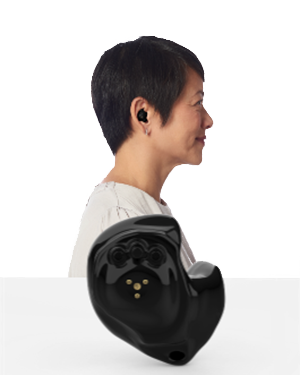
Custom hearing aids are custom molded to fit comfortably in your ear. There are various styles of this type of device available including in-the-ear (ITE), in-the-canal (ITC), completely-in-canal (CIC), and invisible-in-canal (IIC) hearing aids. Additional considerations for cleaning custom hearing aids include:
- Clean your wax guard: Carefully use your wax pick tool to remove any stubborn earwax buildup or debris from your wax guard or change the guard completely should that be needed.
- Clean your air vent: For larger vents, carefully push a vent cleaner through the opening a few times in each direction.
Daily Hearing Aid Care to Prevent Moisture Damage
Your hearing aids are electronic devices, so to avoid damaging their internal components it’s important to mitigate their exposure to moisture as much as possible. Daily exposure to sweat, oils, and humidity is unavoidable, but there are some steps you can take to protect your hearing aids from moisture damage:
- Always remove your hearing aids before taking a bath, showering, or getting in any body of water.
- After water exposure, use a towel to gently dry your ears thoroughly and wait for your hair to fully dry before putting your hearing aids in.
- Use a hearing aid dehumidifier or drying kit every night to remove any moisture from your devices.
- If your hearing aids use disposable batteries, make sure to remove them and keep the compartment door open while they are in the dehumidifier each night.
How to Use a Hearing Aid Drying Kit
A drying kit is a small device that helps remove moisture from your hearing aids. You can put your hearing aids in a drying kit overnight as part of your everyday hearing aid care routine. Drying kits like the Dry Lux use disposable drying capsules that absorb the moisture from your hearing aids, which should be replaced as needed.
Maintaining a Professional Hearing Aid Cleaning Schedule
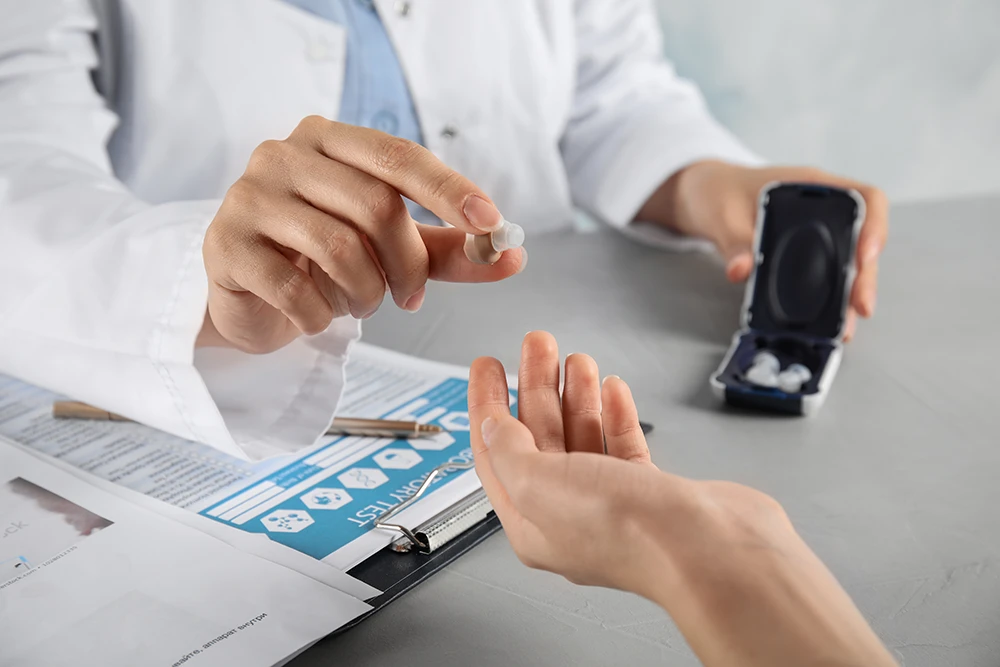
Just like a car needs tune-ups, your hearing aids will need to be taken in for professional maintenance and cleaning by a hearing healthcare specialist. Hearing aids typically require professional cleaning every three to six months. The frequency can vary depending on how much earwax you produce, your specific hearing needs, and other factors discussed with your hearing specialist.
A professional cleaning goes beyond what can typically be achieved at home. This generally entails a thorough cleaning with specialized tools, damage inspection, and performance testing. Your specialist may also make adjustments to ensure optimal hearing aid performance.
Find Professional Hearing Aid Cleaning and Maintenance Services Near You
A combination of daily at-home care and routine professional cleanings can help you preserve the performance, longevity, and comfort of your hearing aids. Routine deep cleans and checkups will also ensure your hearing aids are always performing optimally. These appointments are much faster than your initial fitting or annual exam, making it easy to maintain consistent hearing loss treatment.
Hear your best, all the time. Find an Audibel hearing clinic near you to schedule an appointment today.

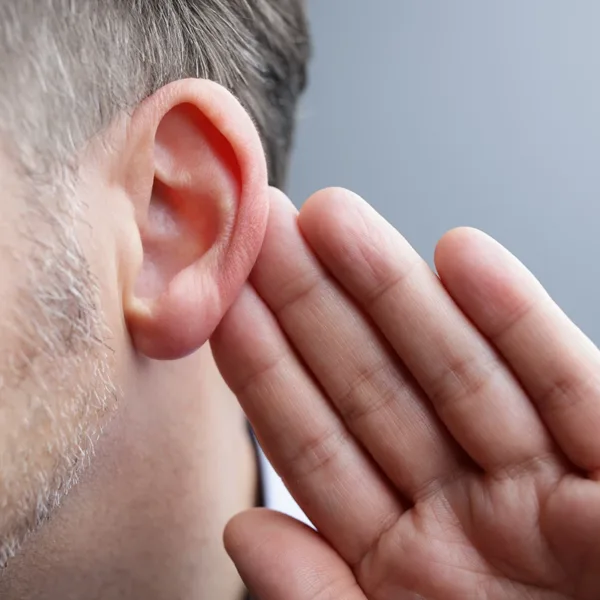
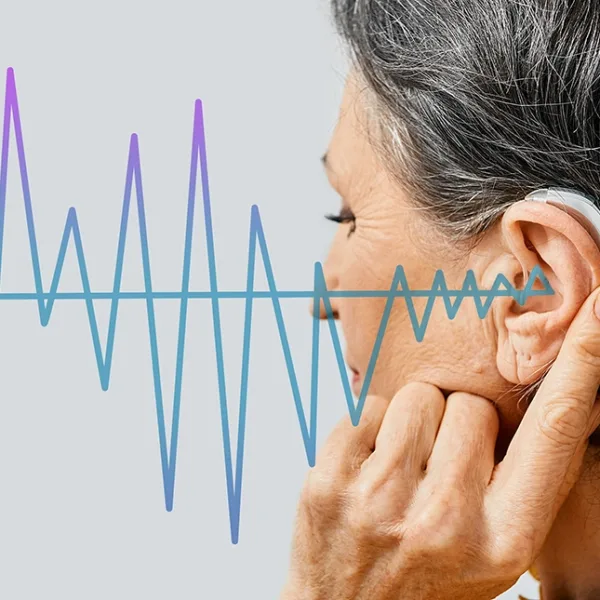




Have a question or Comment?